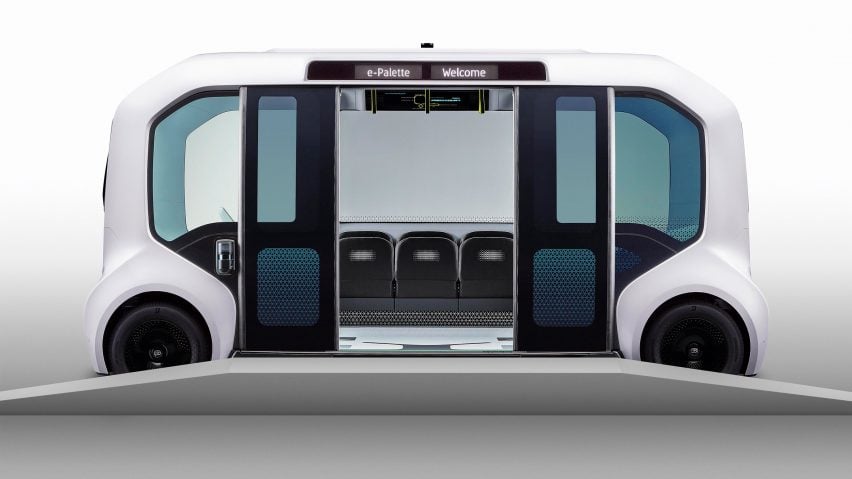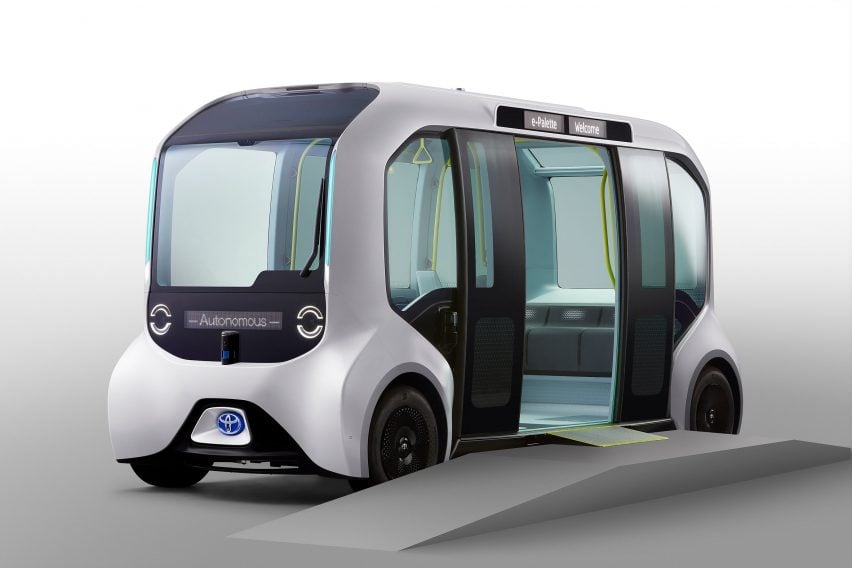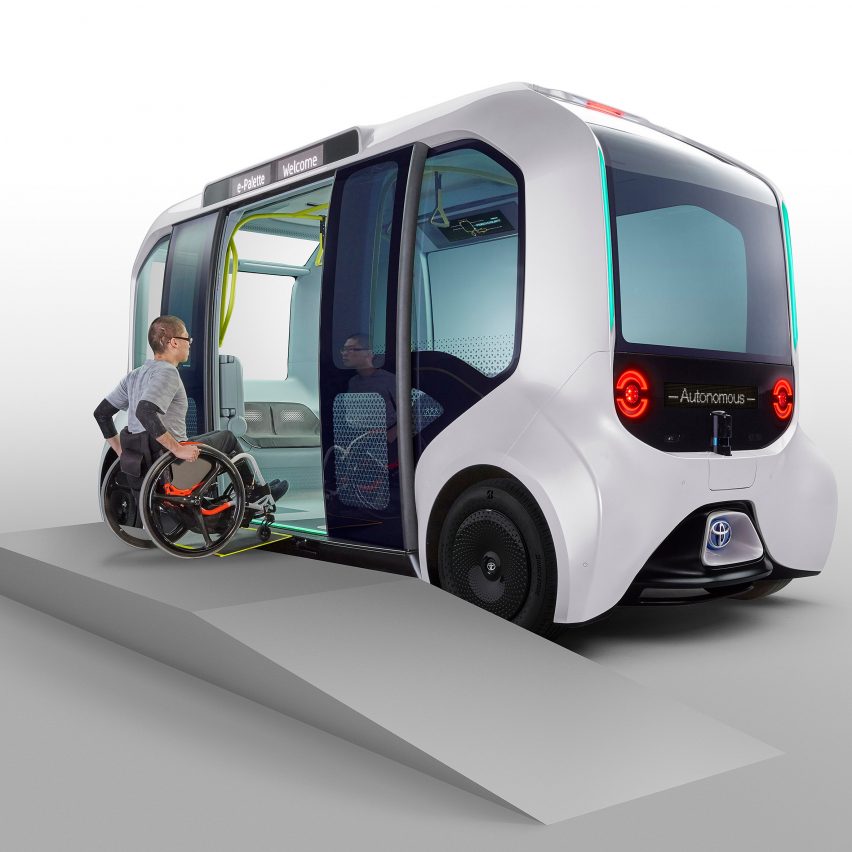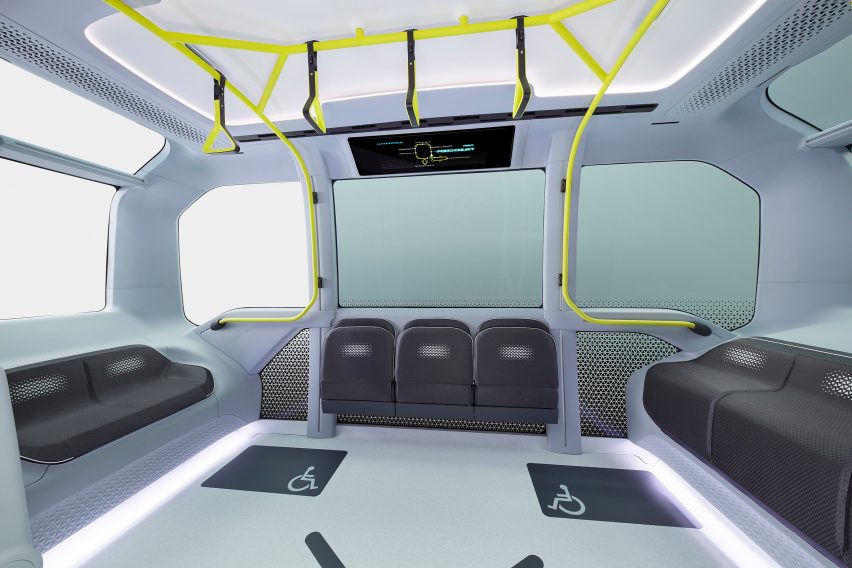
Toyota redesigns its e-Palette vehicle for Tokyo 2020 Olympic athletes
Japanese auto company Toyota has adapted a fleet of its autonomous and electric e-Palette vehicles to serve athletes in the Tokyo 2020 Olympic and Paralympic Games.
Toyota based its modifications of the e-Palette design on feedback from athletes, especially paralympians, to better suit the vehicle to their needs for fuss-free and comfortable transport.
This involved upgrading the multi-purpose vehicle to have larger doors, lower floors and electric ramps that allow passengers – particularly wheelchair users – to board easily and quickly.

The Tokyo 2020 version of the e-Palette will run a loop service around the athletes' villages to transport competitors and staff around the area.
The cuboid-shaped vehicle boasts a long wheelbase and flat floor that enables it to accommodate up to four people in wheelchairs and up to seven standing passengers at the same time.
The e-Palette's interiors also feature handrails and seats that are easy to use for passengers of all heights, while components such as the floor, seats and trim have contrasting colours to cater to people with colour-blindness.

The vehicle will be controlled by a specially designed automated driving-system that uses control hardware, software and advanced sensors, including cameras and laser-operated LiDAR (light detection and ranging).
These features, combined with 3D-mapping technology and an operation management system, will offer low-speed automated driving at SAE level four.
SAE, which stands for society of automotive engineers, determines the intelligence level and automation capabilities of vehicles, measured from zero to five.

To further support safe operation, the e-Palette's automated driving system will constantly monitor the vehicle's 360-degree surroundings to check for obstacles.
It also has external systems that alert others around the vehicle, including pedestrians, of its actions during automated driving.
For example, electronic banners running along each side of the vehicle give written indications to inform people of the car's movements. This is reinforced by the front and rear lamps mimicking human eye-movements.
While the e-Palette will only move at speeds of up to about 12 miles per hour, a safety operator will be on board each vehicle to monitor performance and take control if required.

Toyota released the e-Palette in early 2018, as its first vehicle developed specifically for autonomous mobility-as-a-service (Autono-MaaS) applications, which sees the brand move away from personally owned modes of transport in favour of mobility solutions that are used as a service.
Designed for a wide range of uses, the original version of the automated vehicle can function as a communal taxi, delivery truck or mobile shop, depending on the time of day.
Toyota plans to use the knowledge gained from e-Palette's operation at the Tokyo 2020 games to further develop the vehicle for future Autono-MaaS applications.
The e-Palette will be on show at this year's Tokyo Motor Show, which is taking place from 23 October to 4 November 2019.